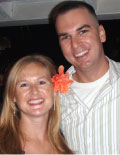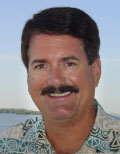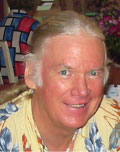 |
||||||||
 |

We asked scientists, researchers and bay managers how they would spend a million dollars to improve seagrasses in Tampa Bay. There’s no doubt that much more money will be needed to meet the goal of restoring seagrasses to the extent they were found in the 1950, but it’s clear that stormwater will be the most important concern going forward.
 Ed Sherwood and Lindsay Cross, scientists at the Tampa Bay Estuary Program
Ed Sherwood and Lindsay Cross, scientists at the Tampa Bay Estuary Program
We would each dedicate $750,000 to increased education and enforcement of slow speed zones in areas with seagrass resources. It’s critical that there are dedicated law enforcement officers protecting the marine resources in the bay; this has been an unmet need.
Lindsay would dedicate her remaining $250,000 to the seagrass transplanting efforts occurring near MacDill. This is an exciting project that incorporates strong science, community involvement, and proven success. I’d love to see the technique used by the MacDill project team applied in other areas.
Ed would dedicate his remaining $250,000 to non-point source controls in areas that are demonstrating stormwater-related impacts to water quality in the bay that may ultimately affect seagrass resources, e.g., the algae blooms routinely occurring in Old Tampa Bay following spring/summer rains.
The largest improvements to seagrass in Tampa Bay will occur by improving water quality via non-point source controls, however, this will require significantly more funding than $1 million.
 Capt. Peter Clark, Tampa Bay Watch
Capt. Peter Clark, Tampa Bay Watch
In terms of the biggest bang for your million, I'm not sure if I would build another stormwater treatment pond. Our problem is stormwater runoff across a large area, an issue that will eventually need to be resolved by those who live in the watershed. Government cannot do it all, but a well-informed community can make the difference. My money would expand the educational efforts throughout the watershed with:
- Expanded storm drain marking programs to let people know that what happens in their community, five miles away from Tampa Bay, still affects water quality downstream,
- River and watershed signage to grow local stewardship and "adopt a waterbody" efforts,
- Grow the Florida Yards and Neighborhood program and support native plantings to promote stormwater runoff quality, and
- Create a littering/marine debris campaign that not only educates our community but rigorously enforces littering regulations.
 Suzanne Cooper, Agency on
Bay Management
Suzanne Cooper, Agency on
Bay Management
Use the million dollars to enhance law enforcement on the bay in areas where boaters have ignored rules and caused thousands of prop scars. Perhaps a year of concentrated enforcement would have a lasting effect.
 Robin Lewis, president of Lewis Environmental Services
Robin Lewis, president of Lewis Environmental Services
I would identify the most dense prop scar damage area in seagrass within an aquatic preserve in Tampa Bay, mark it clearly as under protection from the new state law making prop scarring in an AP illegal and subject to fines from the FFWCC, hire an off-duty FFWCC officer, give him a boat, and ask him to concentrate on patrolling and protection of that specific seagrass damage area. This would all likely happen in Cockroach Bay, Bishop Harbor or Terra Ceia Bay.
 Penny Hall, seagrass administrator, Florida Fish and Wildlife Research Institute
Penny Hall, seagrass administrator, Florida Fish and Wildlife Research Institute
Stormwater, stormwater, stormwater. A million dollars won’t go far, but we need to get stormwater under control if we expect to keep gaining seagrasses in Tampa Bay.